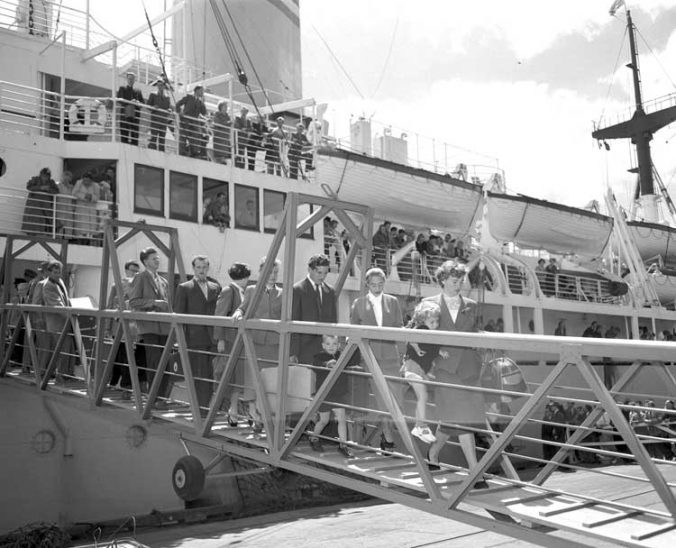If you’re looking to emigrate to Australia from the UK, then you’re in good company. More than ever before, we Britons are electing to up sticks and travel down under in search of sunshine and new experiences. The country offers a perfect blend of strangeness and familiarity, which makes it irresistible to would-be immigrants from all across the globe.
And this isn’t just a recent development, either – human beings have travelled to, and settled, this part of the world for more than fifty thousand years. Let’s consider what the first of these settlements might have looked like.
Where did Aborigines come from?
As almost everyone knows, the first European settlers arrived in Australia to find that they weren’t the first to do so. There already existed large numbers of indigenous people, and the conflicts between the two groups would characterise the subsequent history of this part of the world.
But Aborigines did not evolve in this part of the world, completely independently of the rest of humankind. Had they done so, they would almost certainly be completely dissimilar to the settlers they encountered. Instead, they were descendants of the real first human settlers in Australia, who arrived from Africa some forty to seventy thousand years prior.
How did settlers cross the sea?
This raises an obvious and worthwhile question: how did people cross the sea from Africa to Australia so long ago? It took later settlers a great deal of hardship and technology to make the trip – not to mention the vast resources that come only with the backing of an Empire. How could people have done so thousands and thousands of years ago, before compasses, maps, sails and even writing came to be?
The answer is that they mostly walked. Settlers from Africa spread northward through Arabia, and then across Asia and then south through what we now call the Sunda Islands of Malaysia and Indonesia. During this period in history, sea levels were far lower than they now are, and so stretches of land which are now submerged were open and walkable.
The largest obstacle that such a trip would encounter would come right at the end, in the form of the Timor Sea, which sits just between Indonesia and the north coast of Western Australia. This sea is currently hundreds of miles wide, but it is quite shallow – and so it’s likely that it would have been navigable all of those years ago, when the sea levels were lower.
Why did settlement stop?
This leads us to another question. If people were migrating to this part of the world so long ago, why did they cease to do so? The answer lies in geography. With sea levels gradually rising every year, the voyage across the Timor Sea would have become gradually more difficult. This change came about some ten thousand years ago, at the end of the last glacial period. Aboriginal people would thus have developed and evolved separately to the rest of the world for around for tens of thousands of years, developing their own unique culture and language in the process.
What’s happened since then?
These migrants weren’t the only new arrivals to the continent in the time before Captain Cook first made landfall. Recent DNA evidence has suggested that many migrants from India arrived in Australia some four-thousand years ago. It squashes the theory that the continent was entirely isolated from civilisation throughout the years before European contact. Today, around ten percent of aboriginal DNA is thought to be traceable back to these settlers from India. One interesting conclusion drawn by the study is that the arrival of these new settlers coincided neatly with the first fossil records of the Dingo – leading to the inescapable conclusion that the dingo is descended from a domestic dog introduced by these immigrants, which adapted to the new environment and became part of the ecosystem. New forms of technology and tools also appear during this era, suggesting that this influx of migrants contributed a great deal to life for Australia’s indigenous people.
The immigrants of today
In contrast to the ancient journeys that brought the first immigrants to Australia thousands of years ago, the immigrants of today embark on their own unique odysseys, shaping the cultural tapestry of the nation. As diverse as the landscapes they now call home, these modern pioneers come from every corner of the globe, especially Asia and Europe, carrying with them a rich mosaic of traditions, languages, and dreams. Many communities in Australia welcome this new influx of people, and with affordable land and the ability to realize their dream home with the help of a builder bayside or other parts of the country, people are flocking to the continent. This has contributed to a dynamic and ever-evolving society that stands as a testament to the enduring spirit of exploration and migration.
In Conclusion
If you’re looking to make the switch to life down under, then you’ll be in good company. Australia isn’t just attractive to modern-day immigrants; it’s attracted new arrivals for thousands of years. With so many jobs in Australia for UK citizens on offer, you’re sure to contribute to Australia in much the same way that those very early settlers did. So what are you waiting for? It’s time to plan the next phase of your life.





